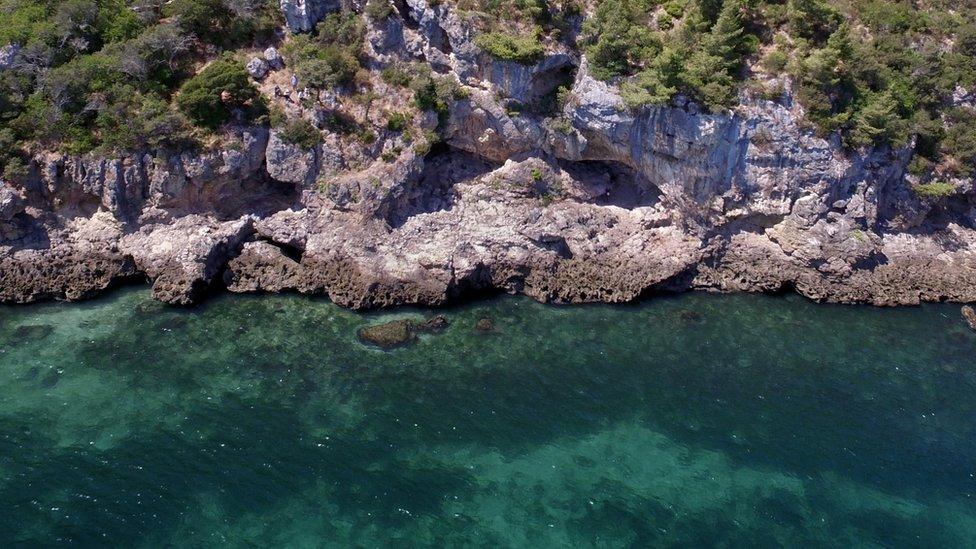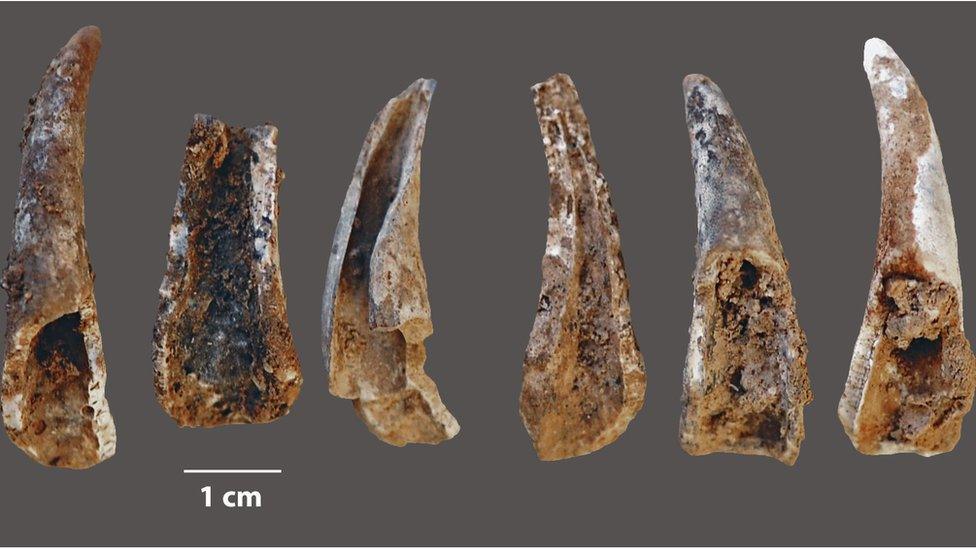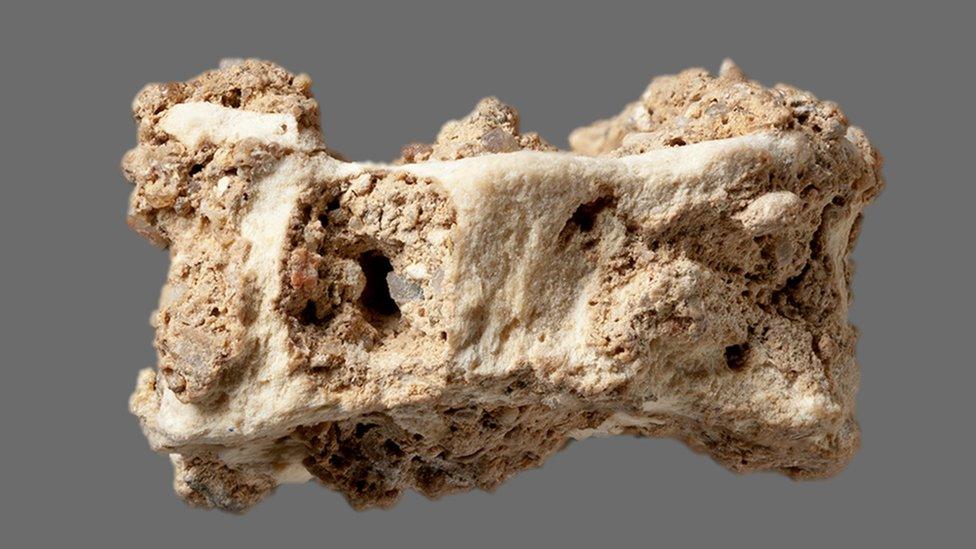Neanderthals ate sharks and dolphins
- Published

There is evidence of the intensive and long-term exploitation of marine food resources at Figueira Brava
Neanderthals were eating fish, mussels and seals at a site in present-day Portugal, according to a new study.
The research adds to mounting evidence that our evolutionary relatives may have relied on the sea for food just as much as ancient modern humans.
For decades, the ability to gather food from the sea and from rivers was seen as something unique to our own species.
Scientists found evidence for an intensive reliance on seafood at a Neanderthal site in southern Portugal.
Neanderthals living between 106,000 and 86,000 years ago at the cave of Figueira Brava near Setubal were eating mussels, crab, fish - including sharks, eels and sea bream - seabirds, dolphins and seals.
The research team, led by Dr João Zilhão from the University of Barcelona, Spain, found that marine food made up about 50% of the diet of the Figueira Brava Neanderthals. The other half came from terrestrial animals, such as deer, goats, horses, aurochs (ancient wild cattle) and tortoises.

Crab claws smashed open by Neanderthals at the cave
Brain-boosters?
Some of the earliest known evidence for the exploitation of marine resources by modern humans (Homo sapiens) dates to around 160,000 years ago in southern Africa.
A few researchers previously proposed a theory that the brain-boosting fatty acids seafood contributed to enhanced cognitive development in early modern humans.
This, the theory goes, could help account for a period of marked invention and creativity that started among modern human populations in Africa around 200,000 years ago. It might also have assisted modern humans to outcompete other human groups such as the Neanderthals and Denisovans.

Vertebral bone from an eel found in the cave
But the researchers found that the Neanderthal inhabitants of Figueira Brava relied on the sea in a scale comparable to modern human groups living at a similar time in southern Africa.
Commenting on the findings, Dr Matthew Pope, from the Institute of Archaeology at UCL, UK, said: "Zilhão and the team claim to have identified 'middens'. This is a shorthand for humanly created structures (piles, heaps, mounds) formed almost entirely of shell.
"They are important as they suggest a systematic and organised behaviour, from collection to processing to discard."
Dr Pope, who was not involved with the current study, added: "In later periods across the world, coastal shell-hunter-gatherers seem to invest in these structures in monumental ways, even having burials within them.
"So to describe these accumulations as 'middens' is a bold and loaded step.
"Certainly, they make a strong case that these are comparable to similar accumulations in the Middle Stone Age of Africa."
The study is published in the journal Science, external.
Follow Paul on Twitter., external